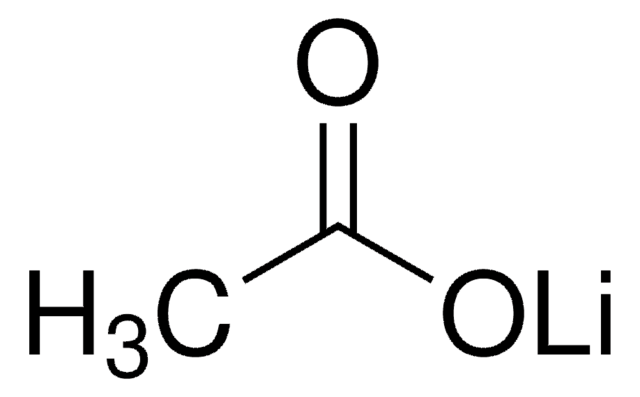202444
Poli(etilenglicol)
average MN 3,350, hydroxyl, powder
Sinónimos:
PEG
About This Item
Productos recomendados
Nombre del producto
Poli(etilenglicol), average Mn 3,350, powder
Formulario
powder
mol peso
average Mn 3,350
pH
4.5-7.5
viscosidad
90 cSt(210 °F) (99 °C)(lit.)
mp
54-58 °C (lit.)
densidad
1.204 g/mL at 25 °C
Ω-final
hydroxyl
α-final
hydroxyl
cadena SMILES
C(CO)O
InChI
1S/C2H6O2/c3-1-2-4/h3-4H,1-2H2
Clave InChI
LYCAIKOWRPUZTN-UHFFFAOYSA-N
¿Está buscando productos similares? Visita Guía de comparación de productos
Categorías relacionadas
Descripción general
Aplicación
It can be used to modify the surface of photocatalytic TiO2 nanopowder for its application in self-cleaning paints. PEG-coated TiO2 nanopowder can be prepared under mild conditions and show excellent colloidal stability.
It can be used as a cross-linker to prepare poly(N-isopropylacrylamide) based thermosensitive injectable hydrogels. The addition of PEG improves the chemical and mechanical properties of hydrogel and prevents it from dissolving in the swelling medium. Owing to their biocompatibility and biodegradability, these hydrogels are widely used for biomedical applications.
Características y beneficios
- High structural flexibility
- Biocompatibility
- High hydration capacity
- Devoid of any steric hindrance
Otras notas
Producto relacionado
Código de clase de almacenamiento
11 - Combustible Solids
Clase de riesgo para el agua (WGK)
WGK 1
Punto de inflamabilidad (°F)
Not applicable
Punto de inflamabilidad (°C)
Not applicable
Equipo de protección personal
Eyeshields, Gloves, type N95 (US)
Elija entre una de las versiones más recientes:
¿Ya tiene este producto?
Encuentre la documentación para los productos que ha comprado recientemente en la Biblioteca de documentos.
Los clientes también vieron
Artículos
Progress in biotechnology fields such as tissue engineering and drug delivery is accompanied by an increasing demand for diverse functional biomaterials. One class of biomaterials that has been the subject of intense research interest is hydrogels, because they closely mimic the natural environment of cells, both chemically and physically and therefore can be used as support to grow cells. This article specifically discusses poly(ethylene glycol) (PEG) hydrogels, which are good for biological applications because they do not generally elicit an immune response. PEGs offer a readily available, easy to modify polymer for widespread use in hydrogel fabrication, including 2D and 3D scaffold for tissue culture. The degradable linkages also enable a variety of applications for release of therapeutic agents.
Devising biomaterial scaffolds that are capable of recapitulating critical aspects of the complex extracellular nature of living tissues in a threedimensional (3D) fashion is a challenging requirement in the field of tissue engineering and regenerative medicine.
Nuestro equipo de científicos tiene experiencia en todas las áreas de investigación: Ciencias de la vida, Ciencia de los materiales, Síntesis química, Cromatografía, Analítica y muchas otras.
Póngase en contacto con el Servicio técnico

